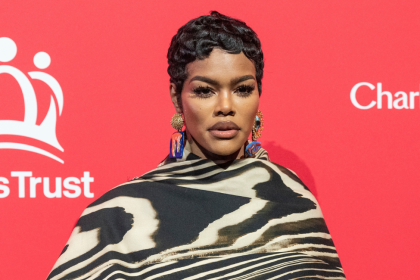The sports world in 2024 marks a pivotal moment for women athletes, with unprecedented viewership and revenue growth. However, even as top performers like Coco Gauff earn $30 million annually, the stark reality of gender pay inequality remains evident when compared to male counterparts like LeBron James’s $128.2 million earnings.
Historical context
The journey of Black female athletes in professional sports reflects a long struggle for recognition and fair compensation. From Althea Gibson’s groundbreaking tennis career to the Williams sisters’ transformation of the sport, each generation has pushed boundaries while facing systemic barriers to equal pay.
Breaking new ground
Whoopi Goldberg’s launch of the All Women’s Sports Network (AWSN) and the establishment of the Unrivaled Women’s Basketball League represent significant steps toward recognizing female athletes’ value. These initiatives aim to create new opportunities and platforms for women in sports, with unprecedented salary structures and media coverage.
Top earners and sponsorships
According to Sportico’s latest report, tennis sensation Coco Gauff leads Black female athletes with approximately $30 million in combined earnings. Her success stems from both tournament winnings and lucrative endorsement deals with companies like New Balance and Head. Naomi Osaka follows with nearly $15 million, leveraging her global appeal for partnerships with luxury brands and tech companies.
The entrepreneurial advantage
Many athletes have expanded beyond traditional sports earnings through business ventures. Serena Williams’ venture capital firm, Serena Ventures, exemplifies how athletes can create wealth beyond their playing careers. This entrepreneurial spirit has opened new avenues for financial success in women’s sports.
Digital influence and earnings
Social media has revolutionized how female athletes monetize their popularity. Platforms like Instagram and TikTok enable direct fan engagement and additional revenue streams through sponsored content. Athletes like Angel Reese have built substantial followings, transforming social media presence into financial opportunities.
League structures and salaries
The wage disparity becomes particularly evident in professional leagues. While the average NBA player earns millions annually, WNBA salaries often require players to seek additional income sources. The new Unrivaled League’s $100,000 minimum salary represents a significant step forward but still falls short of male counterparts.
International market impact
Global opportunities have become crucial for female athletes’ earning potential. Many players compete in multiple leagues internationally to maximize their income. This global presence has expanded their marketability and opened doors to diverse sponsorship opportunities.
Broadcasting revolution
The rise of streaming platforms and dedicated sports networks has increased visibility for women’s sports. Enhanced media coverage drives higher viewership numbers, leading to better broadcasting deals and potentially increased athlete compensation.
Corporate partnerships
Major brands increasingly recognize the value of women’s sports sponsorships. Companies like Nike and Adidas have expanded their investment in female athletes, though significant gaps remain in sponsorship values between male and female athletes.
Advocacy and collective action
Athletes increasingly use their platforms to advocate for equal pay. Through players’ associations and public statements, they challenge existing payment structures and push for reforms. This collective action has led to policy changes and increased awareness of wage disparities.
Success metrics
Recent data shows promising growth in women’s sports viewership and attendance. The 2023 Women’s World Cup drew record audiences, while college women’s basketball continues to see surge in popularity. These metrics strengthen the case for better compensation.
Technology and innovation
Digital platforms have created new revenue opportunities through NFTs, virtual meet-and-greets, and personalized content. Athletes leverage these technologies to build personal brands and generate additional income streams.
Future projections
Industry analysts predict continued growth in women’s sports markets. Increasing corporate investment, expanding media coverage, and growing fan bases suggest positive trends for athlete earnings, though achieving true parity remains a long-term goal.
Investment landscape
Venture capital and private equity firms show growing interest in women’s sports properties. This influx of capital could accelerate the development of new leagues and opportunities for athletes.
As we witness the evolution of women’s sports, the financial landscape continues to transform. While significant progress has been made, particularly for top performers like Gauff and Osaka, the broader challenge of achieving equitable compensation remains. The combination of new leagues, media platforms, and business opportunities offers hope for future generations of female athletes, but sustained effort and investment will be required to close the persistent wage gap in professional sports.
















